Nicholas Barber, 4th Year PhD Student, tells us about his experience as a demonstrator for this summer’s first year field trip to Arran – the first since the pandemic started.
Covid-19’s impact has touched each and every one of our lives. While the impacts of the pandemic have been devastating, in a much smaller way Covid-19 has completely reshaped what it means to study Earth Sciences at Cambridge. Traditionally, our students would spend a week over the Easter holiday tramping through the bogs and heather on the Isle of Arran – this would be their first taste of fieldwork and would be “the best revision any Cambridge undergraduate could ask for.”
However, the outbreak of coronavirus in 2020 stalled our usual trip to Arran and, for our older students, it also precluded popular field trips to the southwest, Skye, Sedburgh, and Spain. Therefore, it was with great anticipation that on July 15th, 2021, thirty 1st year Natural Science students, three postgraduate students, and two lecturers set out on a coach from Cambridge to try to make up for 18 months of lost time outdoors.
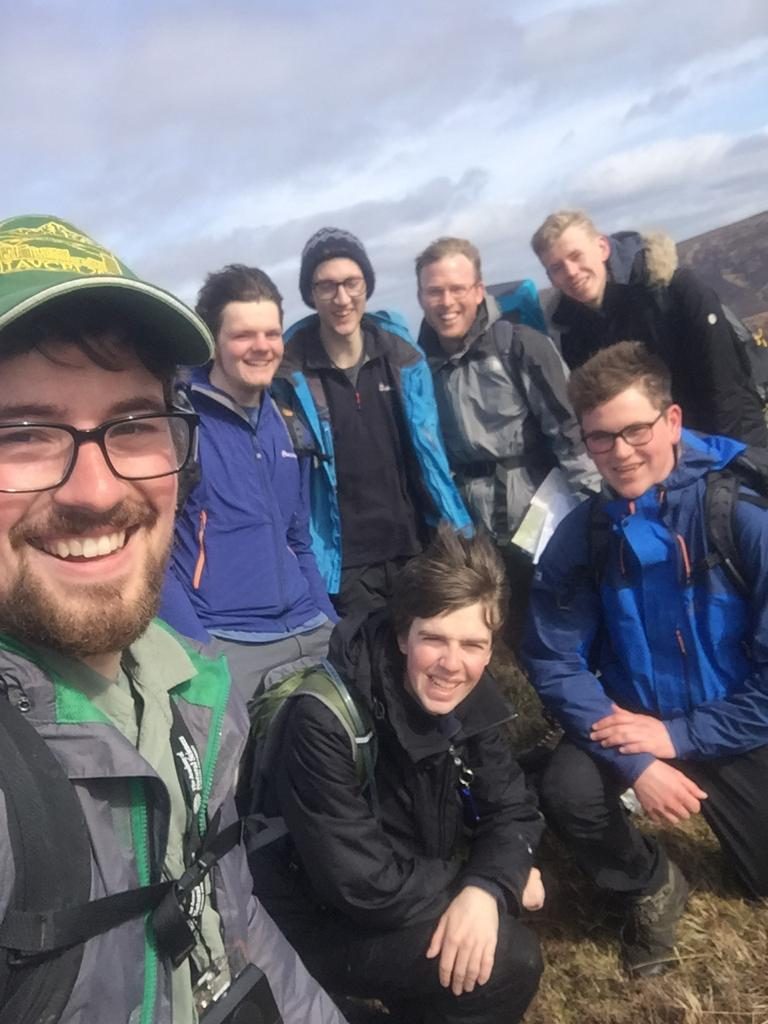
I was a demonstrator for the trip, and was also asked to document our journey on social media. I did this with some degree of nervousness, as we still needed to pass the Covid-19 tests before and during the trip. It would be a shame to start these posts and then have to stop them mid-trip! Thankfully, our amazing administrative and teaching teams developed a robust testing scheme that precluded any outbreak. You might wonder how this could be possible – alumni will remember their time in the Lochranza pub, or in the field centre game room as busy spaces. Not exactly ideal places for social distancing! The lecturers had to make some significant modifications to the trip, including the following:
- Before departure, every student and demonstrator had to submit a negative PCR test. The cost of these tests was picked up by the Department.
- Daily lateral flow tests submitted to and catalogued by fieldtrip lead Dr. Ed Tipper before breakfast.
- Every student was assigned to testing and accommodation bubbles – if anyone in a bubble tested positive the whole bubble would be quarantined pending a PCR test.
- Masks were required on all transport and at all evening meetings, where lecturers and student presentations took place in a fully ventilated room.
This regime of testing, sensible social restrictions, and masking worked wonders. Despite many students not yet having been vaccinated (I had only just received my first dose prior to the trip), we recorded no positive result during our nine days round trip. For the first time since the Greece trip in December 2019, field teaching was possible, and most importantly, safe!
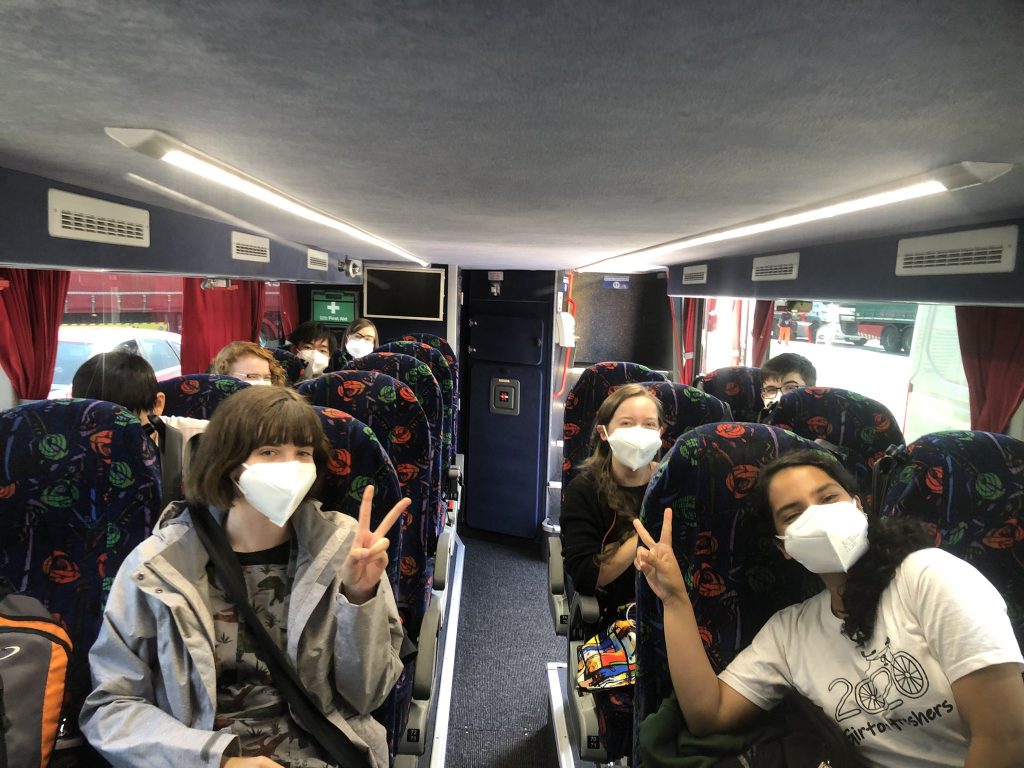
Students masked-up on the coach ride from Cambridge to Ayrshire. Credit: Nick Barber 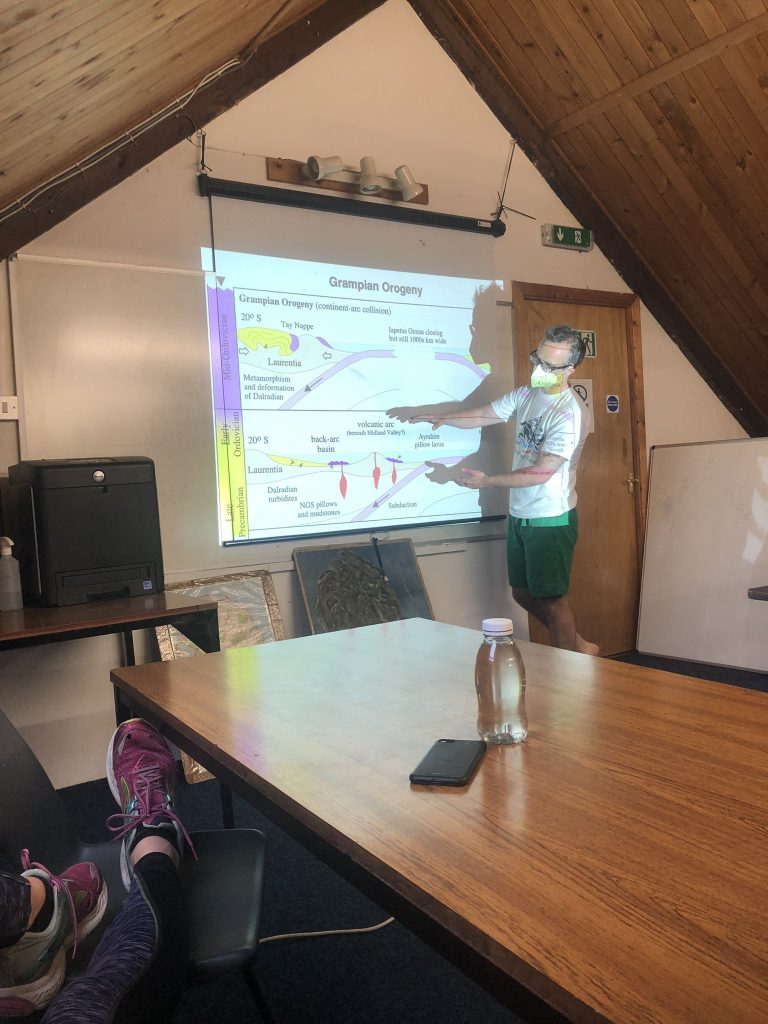
Ed Tipper gives an evening lecture at the field centre. Credit: Nick Barber
In spite of the added safety measures, our time on Arran would be familiar to many of our alumni. We toured the same outcrops and hiked the same trails. But all this familiarity came with one key difference – warm, practically tropical weather. There was hardly a cloud in the sky for the entire duration of our trip! This is probably quite different to how past students remember Arran, and it is certainly reflected on the pictures I shared on Instagram (try not to be too jealous as you gaze at the crystal-clear sky and shimmering blue waves!).
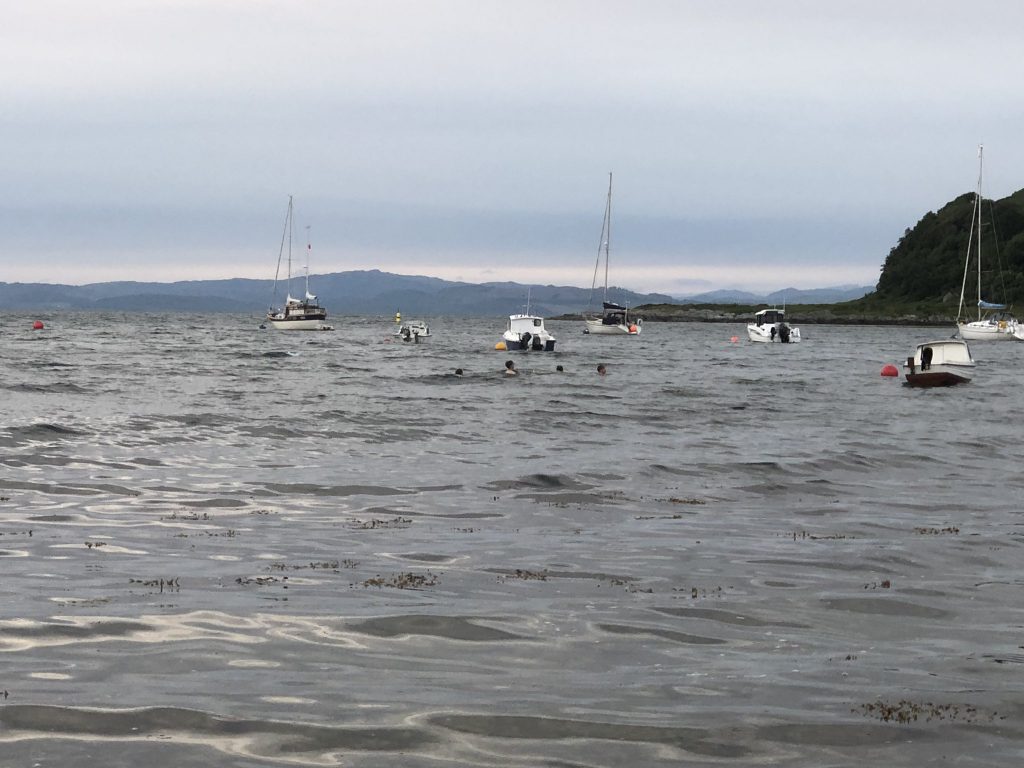
Students take a dip off the coast of Lochranza. Credit: Nick Barber 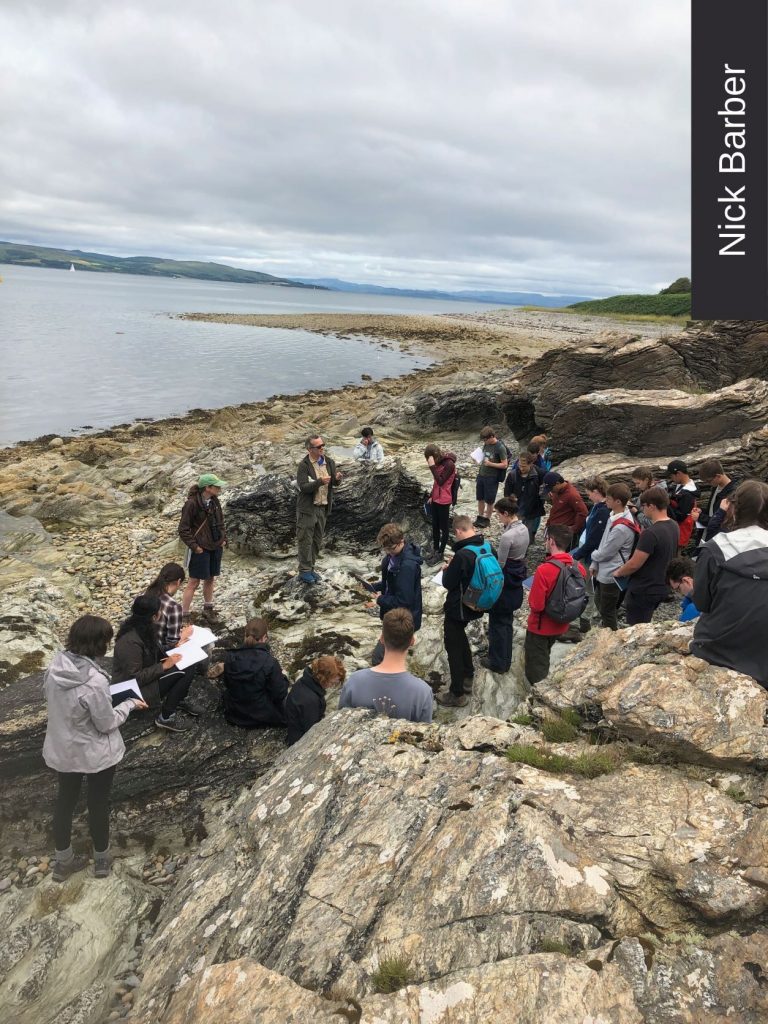
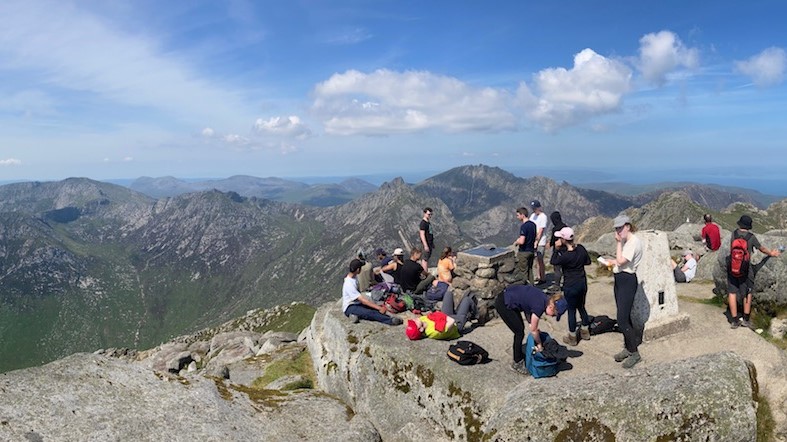
Stunning views from the top of Goat Fell. Credit: Marie Edmonds
Going into this trip, many of our 1A students had hardly spent any time looking at rocks. Michaelmas term was partially in-person, but Lent term this past year was fully virtual. This meant that for many, this was their first time getting up close and personal with any rocks, benefitting from seeing archosaur footprints, ancient volcanics, and Hutton’s unconformity. We ran a field sketch contest of the Drumadoon Sill, and we were stunned to find ourselves awarding commendations to multiple professional-quality drawings! On the final field day, we also saw some impressive attempts to make sense of the inscrutable outcrops at Glen Sannox.
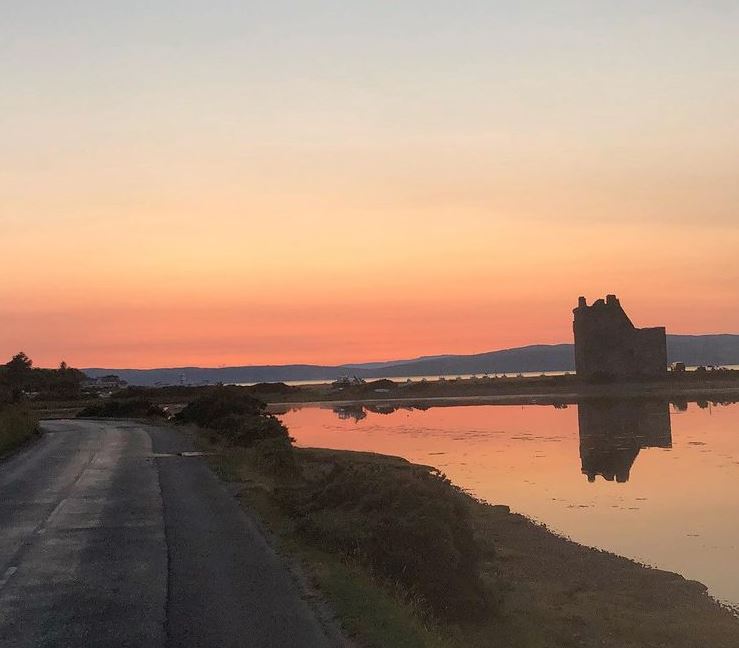
While the science is important, the social side of field trips are special times to connect with your fellow students. With such good weather we made the most of the chance to swim in Lochranza bay or a nearby creek and outdoor socializing was particularly comfortable (when the midges allowed).
Since our trip to the Isle, two more fieldtrips have been made. One of these trips included current 1B students, at last getting the chance to make up for March 2020. By the time of this article’s publication, we should see our Sedbergh and southwest trips already underway. And with any luck, we can hope for similar success in the next academic year. Finding a way to make field trips work during a global pandemic isn’t easy. But through hard work, careful planning, and persistence, the future is looking bright for field work.
Follow Nick and the Arran team’s adventures using #CamArran2021 on Twitter and Instagram.


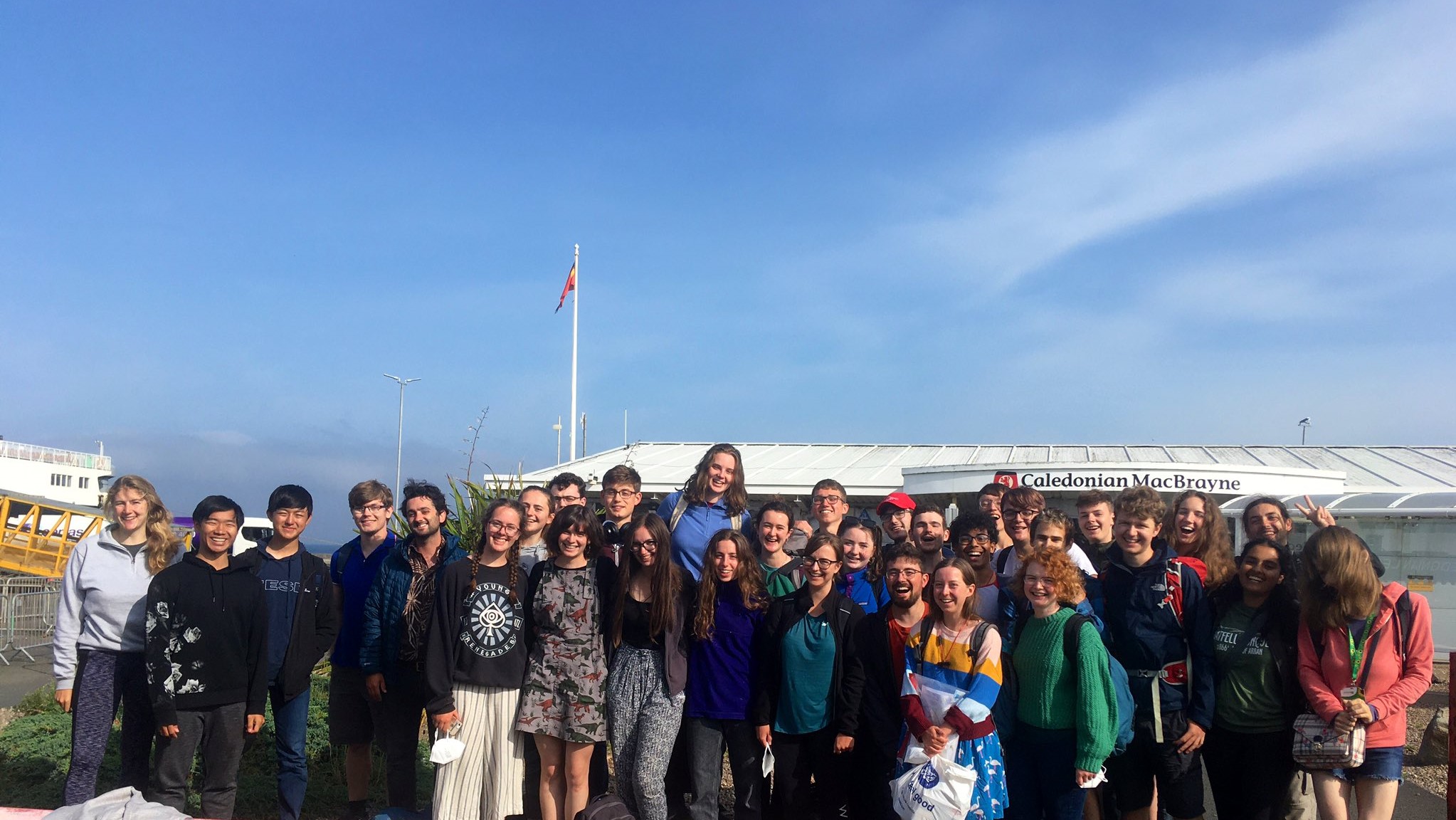
Congratulations in managing all the issues associated with group travel and accommodation to ensure Arran trip went ahead. It is such a good introduction to fieldwork.
My own trip in 1973, lead by Brian Harland, involved lots of walking (he was very fit), lots of learning, and quite a lot of beer drinking. As a postgrad at Edinburgh I supported first year students in their field mapping on the coast around Corrie, measurement of Tertiary crustal extension on the south coast and in their interpretation of the diverse geology.
Long may the Cambridge visits continue.